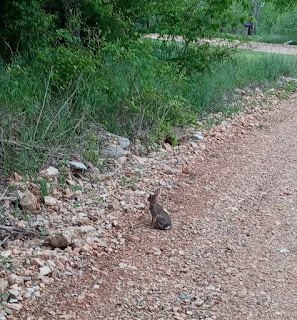Saturday, May 13, 2023
Betty is not my mother
Wednesday, May 10, 2023
Yellow all over
This is our neighbor's field and cattle out the road just past Helen's house. Almost his entier field is covered with this yellow flowered plant 6 to 8 inches tall. With his many black cattle, it makes a stricking image.
Daddy said this was lespedeza and he thought it was good grazing for cattle. Wikipedia says:
Lespedeza is a genus of some 40 species (including nothospecies) of flowering plants in the pea family (Fabaceae), commonly known as bush clovers or (particularly East Asian species) Japanese clovers (hagi). The genus is native to warm temperate to subtropical regions of eastern North America, eastern and southern Asia and Australasia.
These shrubby plants or trailing vines belong to the "typical" legumes (Faboideae), with the peas and beans, though they are part of another tribe, the Desmodieae. Therein, they are treated as type genus of the smaller subtribe Lespedezinae, which unites the present genus and its presumed closest relatives, Campylotropis and Kummerowia.
According to American botanist Asa Gray (1810 – 1888), the Lespedeza owes its name to governor of East Florida Vicente Manuel de Céspedes (1784-1790; who, through a letter, allowed botanist André Michaux to explore East Florida in search of new species of plants, where Michaux found Lespedeza[2]), but when Céspedes wrote the letter, at the beginning of it, the name of Céspedes was changed to "Zespedez". So, when Michaux's book Flora Boreali-Americana of 1802 was printed, the name "Céspedes" to refer to the plant was written as "Lespedez", the word from which the current name of the plant was derived.
Some species are grown as garden or ornamental plants, and are used as a forage crops, notably in the southern United States, and as a means of soil enrichment and for prevention of erosion. In some areas, certain species are invasive. Lespedeza, like other legumes, have root nodules that harbor bacteria capable of nitrogen fixation from the air into a soil-bound form that can be taken up by other plants. Growers can take advantage of this process by putting the plants in their fields to release nitrogen, so they can use less fertilizer.
So, now you know.





